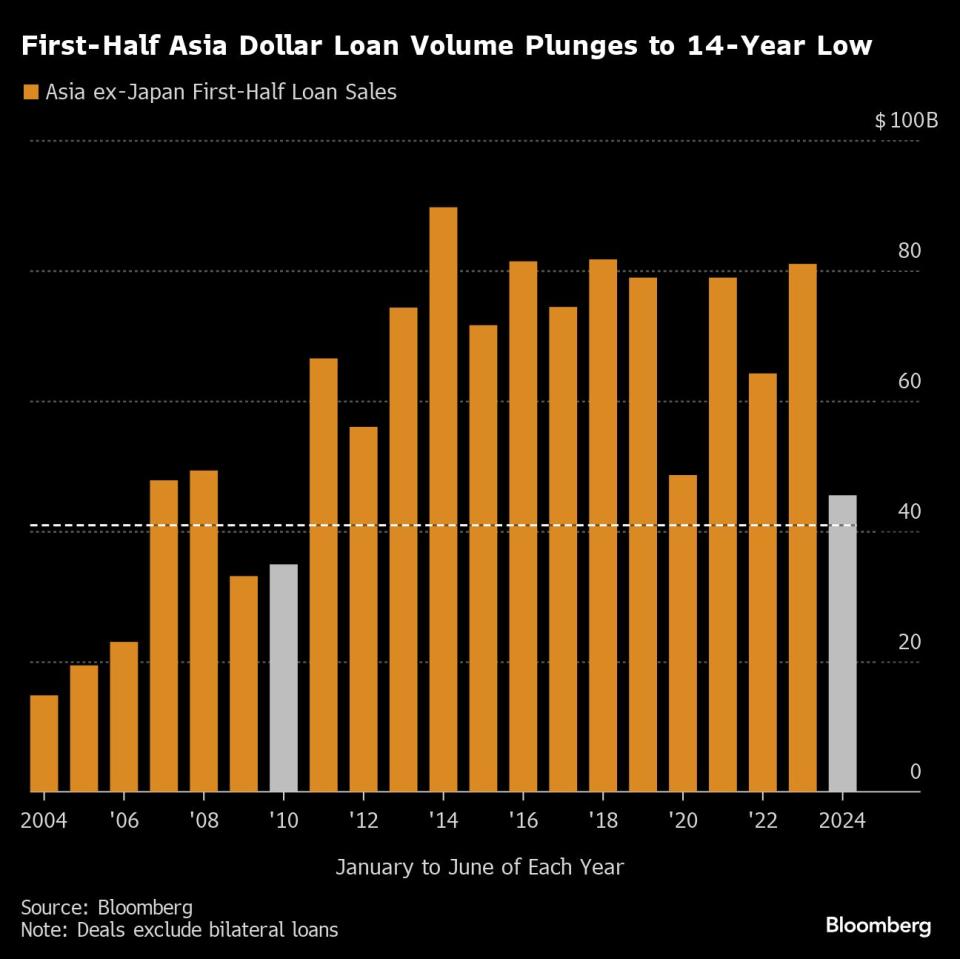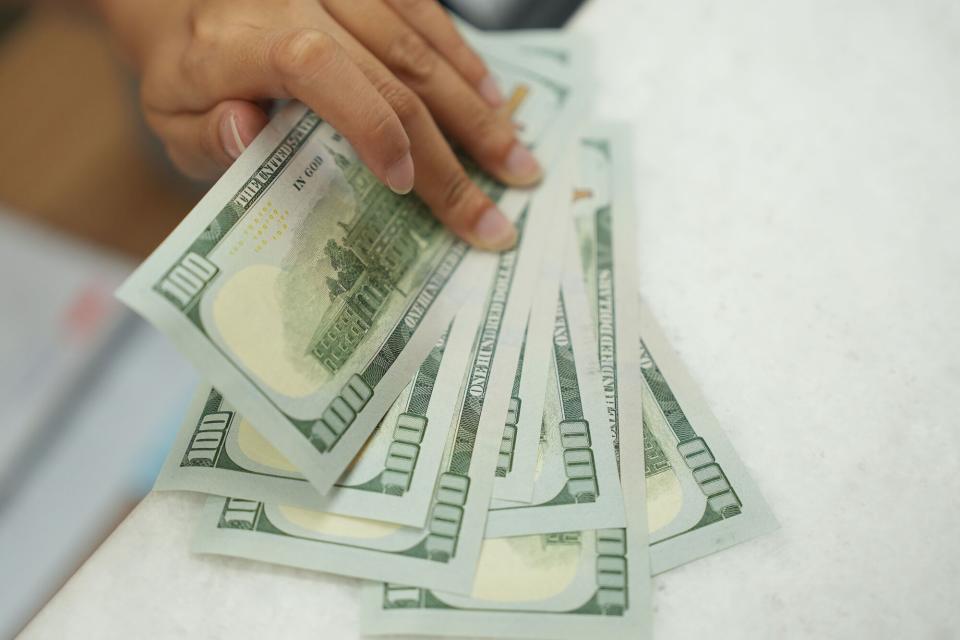Asia Dollar Loan Volumes Plunge to 14-Year Low as Rates Bite
(Bloomberg) -- Dollar loan sales for the first half across Asia excluding Japan tumbled to their lowest since 2010 as higher borrowing costs in the greenback deterred companies, who opted for other financing routes or looked to defer such plans if possible.
Most Read from Bloomberg
Democrats Weigh Mid-July Vote to Formally Tap Biden as Nominee
Trump Immunity Ruling Means Any Trial Before Election Unlikely
Beryl Becomes Earliest Ever Category 5 Hurricane in Atlantic
‘Upflation’ Is the Latest Retail Trend Driving Up Prices for US Consumers
Trump Isn't Going to Like the Supreme Court's Immunity Decision
The amount of loans, which excludes bilateral facilities, declined 44% to about $45.5 billion in the period, the lowest since 2010 when $34.9 billion of deals were done in the first six months, according to data compiled by Bloomberg. The figure is in stark contrast with global US-currency loan sales, which jumped 37% to nearly $2 trillion in the first half of 2024, the highest in three years.
The divergence in the region’s dollar loan volumes from the global trend highlights a pullback by Asian borrowers from US-currency funding because of higher interest rates on the one hand and also the availability to tap alternative debt-raising options such as local-currency bonds and bank financing.
The interest-rate divergence in local-currency and dollar funding makes the effective cost of borrowing domestically more attractive, even for companies with dollar income, said Birendra Baid, Asia loan syndication head at Deutsche Bank AG in Singapore. Also, “local currency capital markets are maturing in certain countries like India, thus opening additional options for the borrowers,” he said.
The risk-free Secured Overnight Financing Rate — or SOFR — which is the reference for most of the deals in Asia, shot up to over 5% now from near zero in 2022 as the Federal Reserve unleashed one of the steepest interest-rate hiking cycles in a generation.
While the US benchmark interest rate remains at 5.5%, policy rates across major economies in Asia range from around zero in Japan to as high as 6.5% in India and the Philippines. The key rate in China, the world’s second-biggest economy, is 3.45%.
That has propelled companies such as Thailand’s largest mobile phone operator True Corp. to venture into alternative markets in a bid to cut financing costs as dollar interest rates remain elevated. The firm is marketing a maiden ¥109.9 billion ($683 million) sustainability-linked yen-denominated loan.
Borrowers across Asia are also queuing up to tap bond markets, especially in local currencies, mainly because of the rate differential but also because of fewer collateral requirements and more liquidity.
Total corporate bond issuance across the Asia Pacific in all currencies has surged to $1.3 trillion this year, with sales of local-currency debt by companies hitting a record for the first half, Bloomberg-compiled data showed.
Still, bankers such as Baid expect a pickup in loan deals in the second half after prospects for a US interest-rate cut improved.
“Private equity activity is also expected to pick up, improving financing deal flow,” he said. “China is also showing sign of bottoming out with the pipeline steadily building up.”
Most Read from Bloomberg Businessweek
The Fried Chicken Sandwich Wars Are More Cutthroat Than Ever Before
Japan’s Tiny Kei-Trucks Have a Cult Following in the US, and Some States Are Pushing Back
RTO Mandates Are Killing the Euphoric Work-Life Balance Some Moms Found
The FBI’s Star Cooperator May Have Been Running New Scams All Along
©2024 Bloomberg L.P.

 Yahoo Finance
Yahoo Finance 

